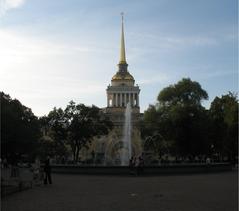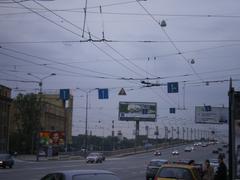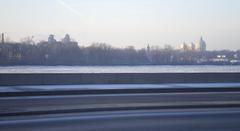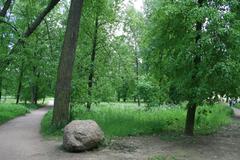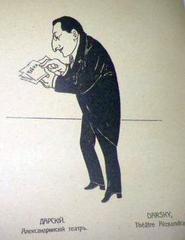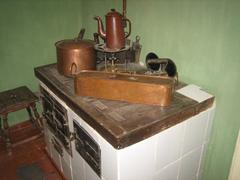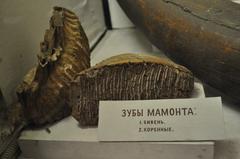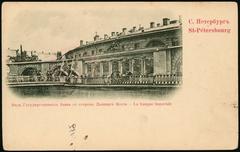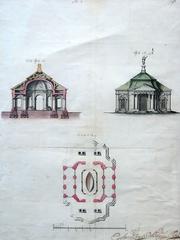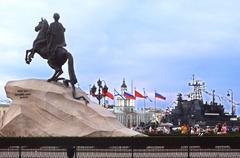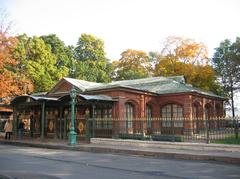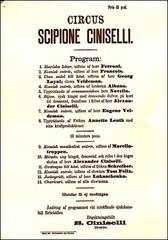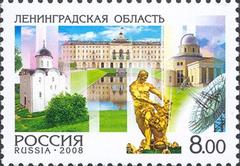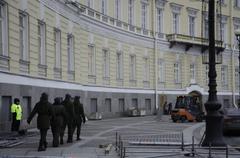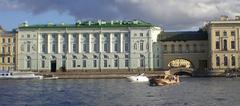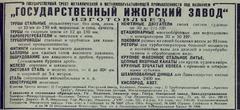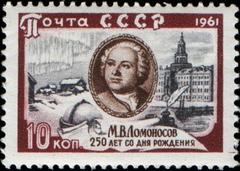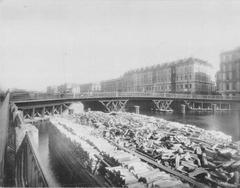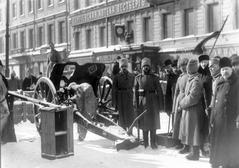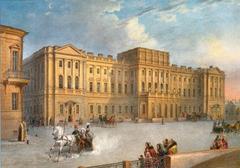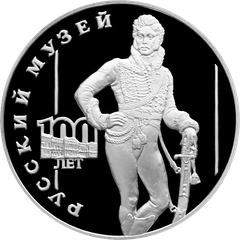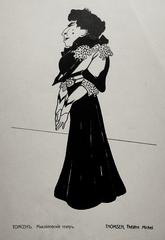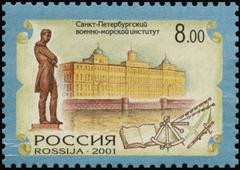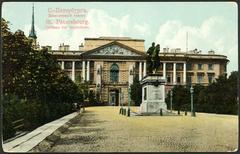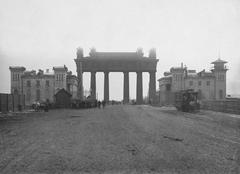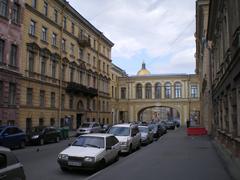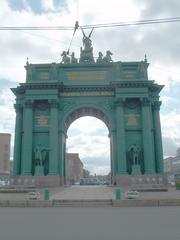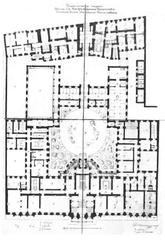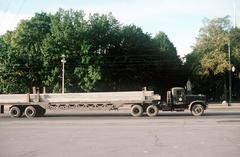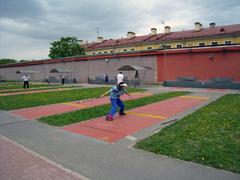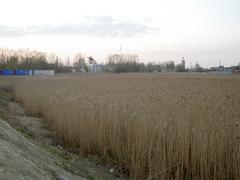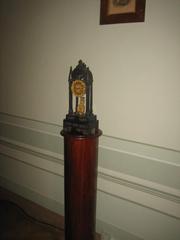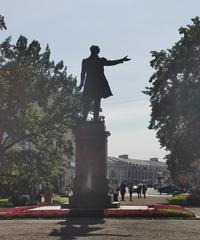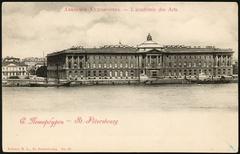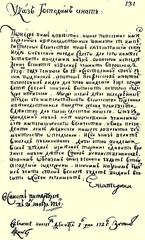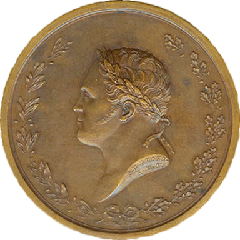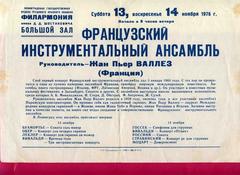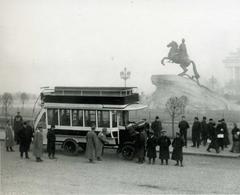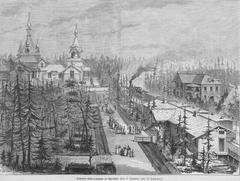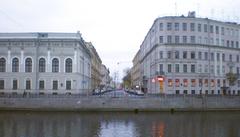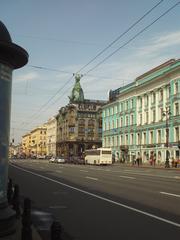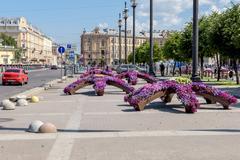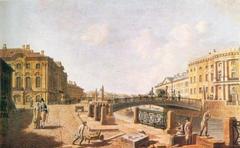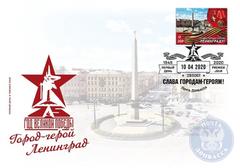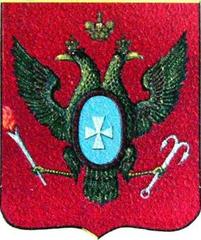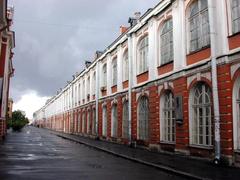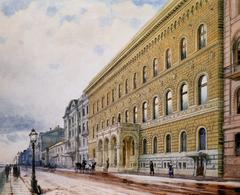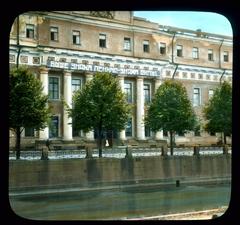
Comprehensive Guide to Visiting Saint Petersburg, Russia
Date: 14/08/2024
Captivating Introduction
Welcome to Saint Petersburg, Russia’s cultural jewel and a city that feels like it was plucked from the pages of a fairy tale. Imagine a place where the opulent architecture of the Winter Palace rivals the grandeur of Versailles, where canals crisscross the city like an intricate lacework, and where every cobblestone seems to echo stories of emperors, revolutionaries, and artists. Saint Petersburg, often called the ‘Venice of the North’ (Introducing Saint Petersburg), is a city that has been at the crossroads of history and culture for over three centuries.
Founded by Peter the Great in 1703, Saint Petersburg was crafted to be Russia’s ‘window to Europe’ (The Collector). This ambition is evident in its stunning Baroque and neoclassical architecture, which has earned the city a UNESCO World Heritage status (PlanetWare). As you wander through its streets, you’ll encounter a blend of Western European elegance and Russian grandeur, from the majestic Hermitage Museum to the serene Summer Garden.
But Saint Petersburg is not just about the past; it’s a living, breathing metropolis that pulses with modern energy. Whether you’re exploring the bustling Nevsky Prospekt, catching a ballet at the Mariinsky Theatre, or savoring traditional Russian cuisine, the city offers a dynamic blend of old and new. And if you’re visiting during the White Nights from June to August, you’ll experience a phenomenon where the sun barely sets, casting a magical glow over the city and making it buzz with cultural events (Wikipedia).
So, whether you’re a history buff, an art lover, or simply a curious traveler, Saint Petersburg promises an adventure that engages all your senses. Ready to dive in? Let’s explore the wonders of this magnificent city together!
Table of Contents
- History of Saint Petersburg
- Significance of Saint Petersburg
- Top Attractions in Saint Petersburg
- Visitor Tips
History of Saint Petersburg
Founding and Early Years (1703-1725)
Picture it: a windswept marshland, a visionary Tsar, and a dream to connect an empire to Europe. On May 27, 1703, Peter the Great founded Saint Petersburg on the bones of a captured Swedish fortress, naming it after the apostle Saint Peter. This wasn’t just any city—it was Russia’s “window to Europe.” With a modest log cabin and a cathedral as its first structures, the city was born from Peter’s fascination with maritime trade and shipbuilding, which he had ardently studied during his European tour in 1697-98 (The Collector).
Imperial Capital (1712-1918)
By 1712, Saint Petersburg had snatched the title of Russia’s capital from Moscow, a role it embraced with grandeur. Despite a brief return of the capital to Moscow between 1728 and 1730, Saint Petersburg flourished as the heart of the Russian Empire. Picture opulent palaces, bustling streets, and a cityscape that serves as a living museum of Baroque and neoclassical architecture (Wikipedia). As a crucial port on the Baltic Sea, it became a hub for trade and an intersection of cultures.
The October Revolution and Soviet Era (1917-1991)
Fast forward to 1917: the October Revolution shook Russia to its core. The Bolsheviks, led by Lenin, moved the government to Moscow in 1918, demoting Saint Petersburg from its capital status. In 1924, the city was renamed Leningrad in honor of Lenin (Wikipedia). World War II brought the infamous 872-day siege by Nazi Germany, a grim period that saw the deaths of an estimated 1.5 million people (Wikipedia).
Post-Soviet Era (1991-Present)
June 1991 marked a return to roots with a city-wide referendum that restored the name Saint Petersburg, just before the Soviet Union dissolved (Wikipedia). The collapse of communism was a mixed bag: a surge in cultural and economic activities contrasted with the political complexities of Vladimir Putin’s presidency, himself a native of this storied city (The Collector).
Cultural Significance
Saint Petersburg is Russia’s cultural crown jewel, home to the Hermitage Museum, which boasts over 3 million artworks (The Broke Backpacker). Its architectural splendor, with Baroque and neoclassical styles, has earned it the nickname “Venice of the North” (Wikipedia).
Key Historical Landmarks
Peter and Paul Fortress
Founded in 1703, the Peter and Paul Fortress is a cornerstone of Saint Petersburg’s history. Originally a military base and prison for political dissidents, it now houses the State Museum of Saint Petersburg History. Don’t miss the daily ritual of a blank shot fired from the Naryshkin Bastion at noon (Russian History Museum).
Winter Palace and Hermitage Museum
The Winter Palace, part of the Hermitage Museum complex, was the official residence of the Russian monarchs. Established in 1764 by Catherine the Great, the Hermitage Museum is one of the largest and oldest museums globally, featuring works by Picasso, Rembrandt, and Michelangelo (Euronews).
Church of the Savior on Spilled Blood
Built where Tsar Alexander II was assassinated in 1881, this church is a marvel of Russian Orthodox architecture with its five-domed, mosaic-covered facade (Euronews).
Significance of Saint Petersburg
A Living Museum of History and Culture
Welcome to Saint Petersburg, a city where every corner tells a tale and every building whispers secrets of the past. Known as Russia’s ‘window to Europe,’ Saint Petersburg is a living museum—a dynamic storybook that unfolds with every step you take.
Historical Significance
Saint Petersburg was founded by the visionary Tsar Peter the Great on May 27, 1703. His dream? To create a city that would bridge Russia and Europe, strategically located on the Gulf of Finland. And what a bridge it became! By 1712, it was the capital of the Russian Empire, holding that prestigious status until 1918 (Britannica).
The city was the stage for pivotal moments in history. It was the epicenter of the 1917 Russian Revolutions, which saw the fall of the Tsarist regime and the rise of the Soviet Union (Introducing Saint Petersburg). During World War II, the city endured the harrowing Siege of Leningrad, a 900-day blockade that tested the resilience of its inhabitants (Saint Petersburg Essential Guide).
Architectural and Cultural Significance
Saint Petersburg is a beautiful blend of Western European and Russian architecture. Peter the Great was so inspired by his European travels, especially his love for Dutch architecture, that he designed the city with an extensive canal network, earning it the nickname ‘Venice of the North’ (Introducing Saint Petersburg).
From the majestic Winter Palace to the historic Peter and Paul Fortress, the city is a treasure trove of architectural wonders. The Winter Palace, now part of the Hermitage Museum, was home to Russian emperors until 1917 and is a UNESCO World Heritage site (PlanetWare). The Peter and Paul Fortress houses the tombs of the Romanov dynasty and is steeped in history (Culture Tourist).
An Artistic and Cultural Hub
Often hailed as Russia’s cultural capital, Saint Petersburg is home to the Hermitage Museum, one of the world’s largest and most prestigious art museums, showcasing over three million items (Lonely Planet). The Russian Museum offers a deep dive into Russian art, from ancient icons to avant-garde masterpieces (Lonely Planet).
Cultural landmarks like the Mariinsky Theatre, famous for its ballet and opera performances, add to the city’s artistic allure (Lonely Planet). Don’t miss the Erarta Museum of Contemporary Art, boasting a collection of 2800 pieces of Russian contemporary art (Lonely Planet).
Visitor Tips
Getting Around
Navigating Saint Petersburg is a breeze with its efficient public transport system. The metro stations are works of art in themselves, adorned with statues, marble, and mosaics (Culture Tourist). Renting a car? Think again—traffic can be a nightmare (Culture Tourist).
Language and Communication
Most signs are in Cyrillic, which can be a puzzle for non-Russian speakers. Pro tip: snap photos of place names and use translation apps to help navigate (Culture Tourist).
Accommodation
From luxury hotels to cozy hostels, Saint Petersburg has it all. Choose a place near a metro station for easy access to the city’s attractions (Miss Tourist).
Must-See Attractions
The Hermitage Museum
A visit to Saint Petersburg isn’t complete without exploring the Hermitage Museum. With its vast collection spread across six buildings, including the Winter Palace, you’ll need more than a day to see it all (PlanetWare).
Peterhof Palace
Plan a day trip to the Peterhof Palace Complex, known as the ‘Russian Versailles.’ The palace is famous for its grand fountains and opulent architecture (PlanetWare).
Church of the Savior on Spilled Blood
Built on the site of Emperor Alexander II’s assassination in 1881, this church is a visual feast with its vibrant onion domes and intricate mosaics. A quintessential example of Russian Revival architecture, it’s located along the Griboedov Canal. Streamline your visit by buying tickets online.
Saint Isaac’s Cathedral
The gilded dome of Saint Isaac’s Cathedral dominates the skyline, offering breathtaking panoramic views of Saint Petersburg. Inside, you’ll find stunning mosaics, paintings, and sculptures. Skip the wait by purchasing tickets online.
The Mariinsky Theatre
Experience world-class performances at the Mariinsky Theatre, one of the world’s most prestigious opera and ballet venues. Established in 1860, it has hosted legends like Tchaikovsky and Shostakovich. Due to high demand, book tickets in advance.
Nevsky Prospekt
The bustling Nevsky Prospekt is the main avenue of Saint Petersburg, stretching 4.5 kilometers and lined with historic buildings, shops, and cafes. Don’t forget to explore the side streets for hidden gems away from the crowds.
The State Russian Museum
Dive into the largest collection of Russian fine art at the State Russian Museum, housed in the Mikhailovsky Palace. With over 400,000 exhibits, including works by Repin, Kandinsky, and Malevich, it’s a must-visit. Save time by purchasing tickets online.
Peter and Paul Fortress
Explore the birthplace of Saint Petersburg at the Peter and Paul Fortress. Founded by Peter the Great in 1703, it houses the Peter and Paul Cathedral, where many Russian tsars are buried. Visit the Trubetskoy Bastion, a former political prison. Get your tickets online.
Catherine Palace
Travel to Tsarskoye Selo to witness the Rococo splendor of Catherine Palace, famed for its Amber Room. Allocate a full day for this trip and avoid long waits by buying tickets online.
Fabergé Museum
Admire the world’s largest collection of Fabergé eggs and other decorative arts at the Fabergé Museum, located in Shuvalov Palace. Ensure your entry by buying tickets online.
Yusupov Palace
Step back in time at Yusupov Palace, known for its opulent interiors and the assassination of Grigori Rasputin. Guided tours take you through its luxurious rooms and infamous basement. Purchase tickets online for convenience.
Summer Garden
Stroll through the tranquil Summer Garden, established by Peter the Great in 1704. Enjoy its marble statues, fountains, and manicured gardens. Entry is free, although some exhibitions may require tickets.
Kazan Cathedral
Modeled after St. Peter’s Basilica in Rome, Kazan Cathedral is a majestic Russian Orthodox church on Nevsky Prospekt. Built between 1801 and 1811, it’s dedicated to Our Lady of Kazan. The cathedral is free to enter, but donations are appreciated.
The Bronze Horseman
Visit the iconic Bronze Horseman statue of Peter the Great in Senate Square. Commissioned by Catherine the Great and created by Étienne Maurice Falconet, it’s a popular spot for photos and free to visit.
Visitor Tips
Best Time to Visit
Summer is ideal, especially from mid-June to September, when the weather is pleasant, and the White Nights Festival is in full swing. (Guide to Petersburg)
Navigating the City
Start at Nevsky Prospekt, the city’s main thoroughfare. Public transportation, including the metro, buses, and trams, is efficient and affordable. A little Russian goes a long way—learn a few basic phrases to make your visit smoother (The Invisible Tourist).
Safety
Saint Petersburg is generally safe, but be vigilant against pickpockets in crowded areas. Use reputable taxi services and avoid displaying valuable items openly (The Broke Backpacker).
Call to Action
In conclusion, Saint Petersburg stands as a testament to Russia’s rich history, cultural depth, and architectural splendor. From its founding by Peter the Great as a strategic maritime hub to its role as the imperial capital, and through its resilience during the Soviet era and beyond, the city’s story is as complex as it is fascinating (Britannica).
Today, Saint Petersburg continues to charm visitors with its blend of historical landmarks, such as the Peter and Paul Fortress, and cultural treasures like the Hermitage Museum (The Broke Backpacker). The city’s vibrant arts scene, epitomized by iconic venues like the Mariinsky Theatre, and its picturesque streets and canals, offer endless exploration opportunities. Whether you’re marveling at the mosaics of the Church of the Savior on Spilled Blood or strolling along the elegant Nevsky Prospekt, Saint Petersburg is a city that never ceases to amaze (PlanetWare).
As you plan your visit, remember to take advantage of the city’s efficient public transport, learn a few Russian phrases, and immerse yourself in local customs (The Invisible Tourist). And for an even richer experience, download Audiala, your ultimate travel companion. With beautifully crafted audio guides, expert insights, and hidden gems, Audiala will help you unlock the secrets and stories of Saint Petersburg, making your journey truly unforgettable. Ready to explore? The adventure awaits!
References
- The Collector, 2024, Saint Petersburg City History
- Wikipedia, 2024, Saint Petersburg
- The Broke Backpacker, 2024, Best Places to Visit in Saint Petersburg
- Britannica, 2024, St. Petersburg Russia
- Introducing Saint Petersburg, 2024, History of Saint Petersburg
- Saint Petersburg Essential Guide, 2024, History of St. Petersburg
- PlanetWare, 2024, Top-Rated Tourist Attractions in St. Petersburg Russia
- Culture Tourist, 2024, Saint Petersburg Ultimate Travel Guide
- Lonely Planet, 2024, St. Petersburg Russia
- The Invisible Tourist, 2024, Dos and Don’ts in Russia Travel Tips
